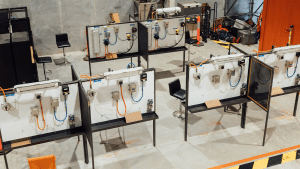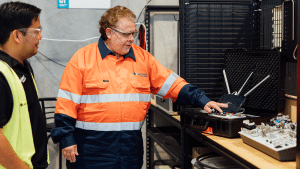By Brendan Newell
The resources sector is no stranger to boom and bust, but it’s what companies are doing with the gaps in between that is incredibly interesting to observe, particularly in terms of the correlation to other industries.
Uncertainty in the global economy, domestic politics and resource prices are creating a tough environment for companies in many of our industrial sectors, such as mining and resources, manufacturing and infrastructure. We are finding that it’s also forcing companies to relook at every aspect of their businesses to enhance efficiencies, maintain productivity and continue operating at optimal capacity.
CONNECTING PRICES AND LOSSES
Whilst this is no doubt a good thing, there has been a tendency as part of this process to cut back on health, safety and training. Leading global risk manager, Marsh, in its recently released report (“Can energy companies break the historical nexus between oil price falls and large losses?”) looks to correlate falling oil prices with increased company losses. It concludes that reduced revenue leads to reduced investment in a number of areas including health, safety and employee training. The evidence from previous price downturns indicates that losses come off the back of these cuts in investment.

On the flipside, companies which continue to focus and invest on health, safety and training observe demonstrable decreases in process safety incidents, which many measure in their KPIs. A case in point is BP, which reported that process safety events had decreased to 20 in 2015 from 74 in 2011.

Source: BP 2015 Annual Report
While we’re sharing data on companies in the resources sector, there is no doubting that this correlation between investment and losses/gains extends beyond mining and oil and gas, to infrastructure, manufacturing and other industries. It’s just that the trend towards increased incidents is more amplified in the highly cyclical resources sector.
MIND THE GAPS
So while it’s relatively easy to fall into the trap of looking at decreasing investment in training, we are counselling our clients to avoid it at all costs. Reduced training leaves companies and their people vulnerable to incidents, which have a potentially far higher cost than the initial savings in training fees and downtime.
Companies need to make sure their people are ready for the next phase of the cycle, meaning if they are about to enter a higher production phase, their workforce needs to be skilled up to operate plant and equipment at high performance levels. Otherwise, you are playing a continuous game of catch up where staff don’t have the capability to do their jobs, operations aren’t optimal, and downtime and maintenance end up becoming an issue and is dealt with in a reactional manner.
We have these discussions with companies in any industry where efficiency is important. Whilst many turn to technology to drive that efficiency, this new technology still needs to be operated by people with the right skills and competencies. Investing in technology whilst at the same time skimping on training the people to harness that technology simply doesn’t make sense.
In this way, companies facing uncertain times and pricing pressures can, in my opinion, sustain their current operations and also position themselves for the next phase of the business cycle.











